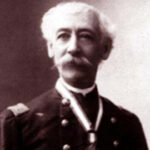At the mention of the American Civil War, the contrasting colors of uniforms immediately come to mind: blue for the Union and gray for the Confederacy. These colors have become synonymous with the opposing sides, yet the reality of Civil War uniforms was initially far more diverse and nuanced, especially at the outset of the conflict.
In the early stages of the Civil War, a wide array of clothing and uniforms were seen on both sides. Many soldiers initially wore garments they brought from home, leading to a patchwork appearance within units. Furthermore, local militia groups, already equipped with their distinct uniforms, entered service still wearing them. This resulted in instances of Union troops clad in gray and Confederate soldiers in blue, causing confusion and highlighting the early lack of standardization. Adding to the visual complexity, some units adopted the flamboyant style of French Zouaves from North Africa, sporting baggy, brightly colored trousers—often red or striped—paired with fez hats or turbans.
However, the traditional uniforms of the U.S. Army served as the baseline for the Union forces. Regular army soldiers were recognized by their dark blue trousers, jackets, and kepi caps. To differentiate the burgeoning volunteer forces, which constituted the majority of the Federal armies, from the regular army professionals, a slight modification was introduced. Volunteers were issued dark blue jackets and kepis, but notably, they wore light blue trousers.
 Confederate soldier in typical gray uniform of the American Civil War
Confederate soldier in typical gray uniform of the American Civil War
Confederate uniforms, aiming for distinction, were primarily gray in color for kepis, jackets, and trousers. Over time and exposure to the elements, these gray uniforms tended to fade and weather, acquiring a lighter, brownish hue. This alteration in color led to the Southern soldiers being nicknamed “Butternuts,” a reference to this distinctive brown shade. The “butternut” brown color may also have originated from the dyes that were readily available and used for simpler, homespun uniforms within the Confederacy.
Beyond the basic infantry uniforms, specific branches had color-coded distinctions. Artillerymen on both sides were identifiable by their red kepis and shell jackets featuring red trim. Depending on rank, they might also have a red stripe on their trouser legs. Cavalry soldiers were marked by yellow, with a yellow stripe on their trousers and yellow trim on their jackets, setting them apart on the battlefield.
While blue and gray were the dominant colors, specialized units sported other variations. Perhaps the most well-known example is the green uniforms worn by Hiram Berdan’s Union sharpshooters, designed for camouflage and concealment. Nevertheless, the blue of the Union and the gray of the Confederacy remained the most prevalent and recognizable uniforms throughout the Civil War.
Material choices also differed between the sides, influenced by geographical factors. The cotton-producing South utilized cotton cloth in Confederate uniforms, suitable for the warmer climate. In contrast, the North equipped its troops with wool uniforms. Wool offered advantages in diverse weather conditions, providing warmth during colder periods and remaining relatively cool in summer, particularly when a breeze was present.
The demands of campaigning and warfare took a heavy toll on uniforms and footwear. Despite the enduring image of the “rag-tag, barefoot Confederate,” it is important to recognize that Union soldiers also faced similar hardships. At various points during the war, soldiers on both sides could be found enduring campaigns in threadbare uniforms and even without shoes, highlighting the logistical challenges of supplying armies in the field and the shared experiences of hardship faced by soldiers regardless of uniform color.

